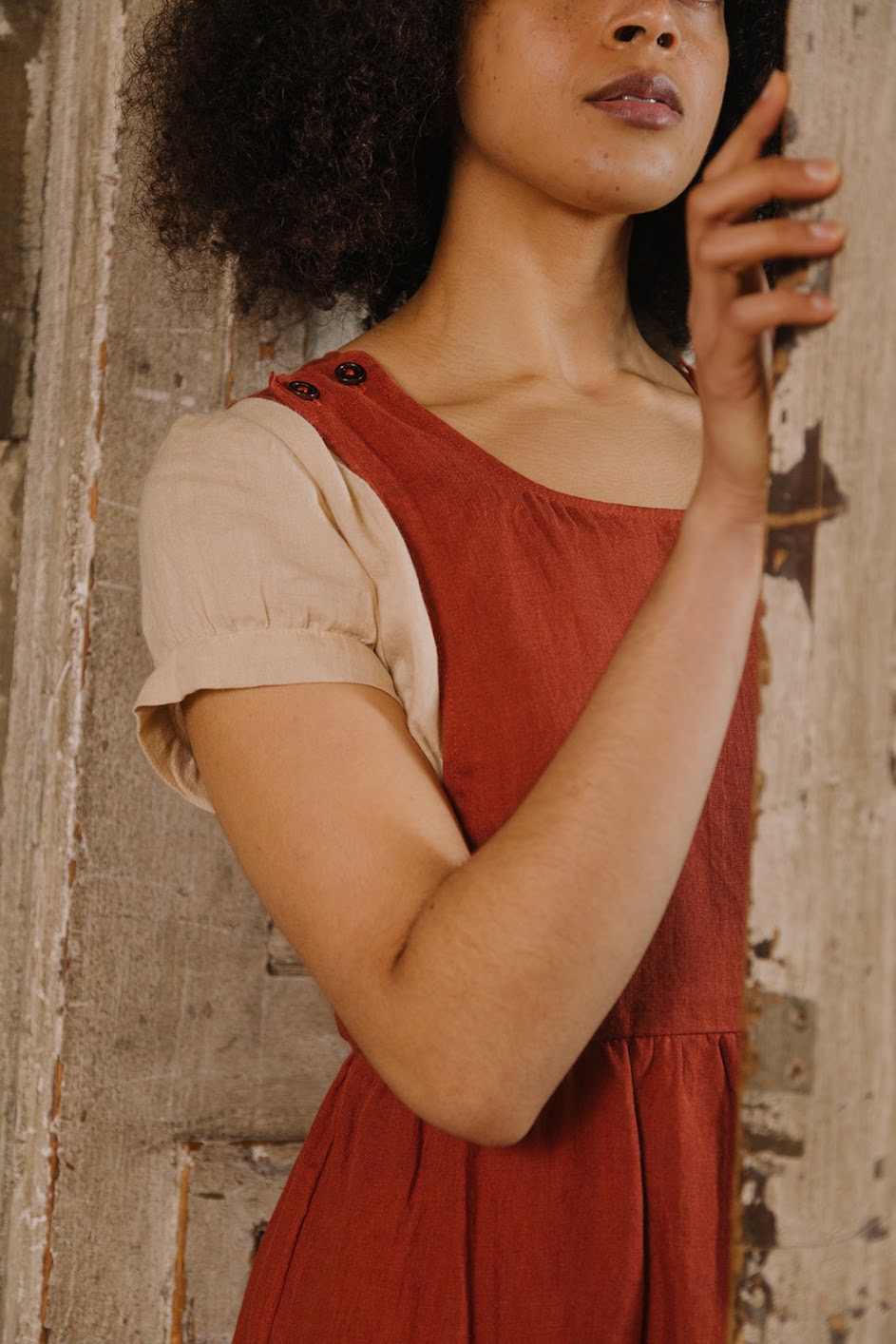What is a pinafore?
The pinafore was traditionally created for children to wear over their garments to keep them clean. The word pinafore itself comes from the conjunction ‘pinned’ and ‘afore’, or in front, as they were pinned onto children as a hardy protective layer that could be washed more frequently.

The History of the Pinafore
Interestingly, there are different theories about why the pinafore came about. One is that the pinafore is a reflection of a changed view of childhood due to Rousseau’s teachings of the importance of play and exploration as a means of children’s education, rather than a stifled and strict obedience to authority. Its function to allow children freedom of creativity and learning through discovery is symbolic.
The pinafore was not only for children, women also wore them; most notably throughout the 20th century. The utilitarian cut of a pinafore covered a greater area than an apron, making it better suited as a uniform for more demanding and messy work at a time when women began to re-enter a workforce comprised of men. On top of this, pinafores were often made of heartier material in order for them to be washed often with lye based detergents that would tarnish delicate clothing. It was a symbolic of transitioning femininity and represented a mixture of women’s capabilities and changing place in society while also keeping the beauty and identity of women’s fashion.
 |
 |
(L) Model No.32 Pinafore in Devon Red Linen and (R) Amber from The Fairly Local Family in the Pinafore in Sage Green Linen
Benefits of a Pinafore Dress
The beauty of the pinafore is that it is truly multipurpose; it can be a sundress, apron, jumper (British for a smock) and layered over almost anything. It works as a dress on its own, can be made of different material, colors and patterns, and comes in different cuts and styles. The most recognized style is a square cut full bodice covering the front and back, but leaving the sleeves and neckline uncovered in order to show off details of the blouse or dress underneath.
Karmen Meyer in a Pyne & Smith Model No. 32 Pinafore
Personally, a pinafore adds a touch of vintage to my wardrobe. It makes me feel connected to the past and the lineage of women before me who were keeping up the household, working in the fields, creating art, stepping into the workforce during the world wars or even fighting for our rights. Wearing a pinafore instantly makes me feel more productive, ready to create, make, work and at the same time it gives me a freeing sense of childlike wonderment. I love that its function of play is tangible, making me feel more open minded and light hearted (cue the song ‘Maria’ from Sound of Music).
Pinafores are beautifully balanced; steeped in romanticism whilst also being grounded and functional. Uniformed yet freeing. Add in the fact that it can be worn with so many different styles, and I would argue it is the most underrated, timeless staple piece.


